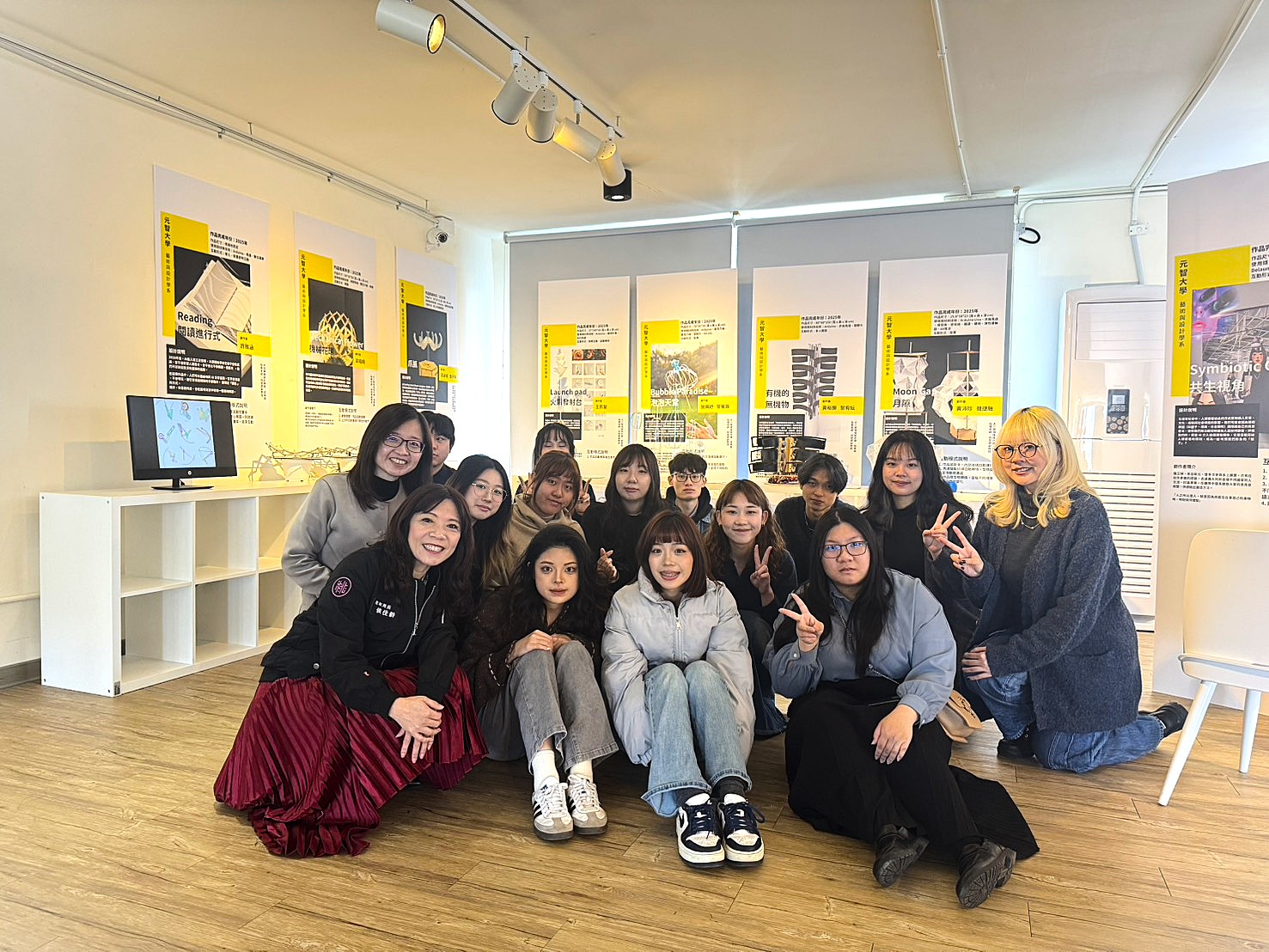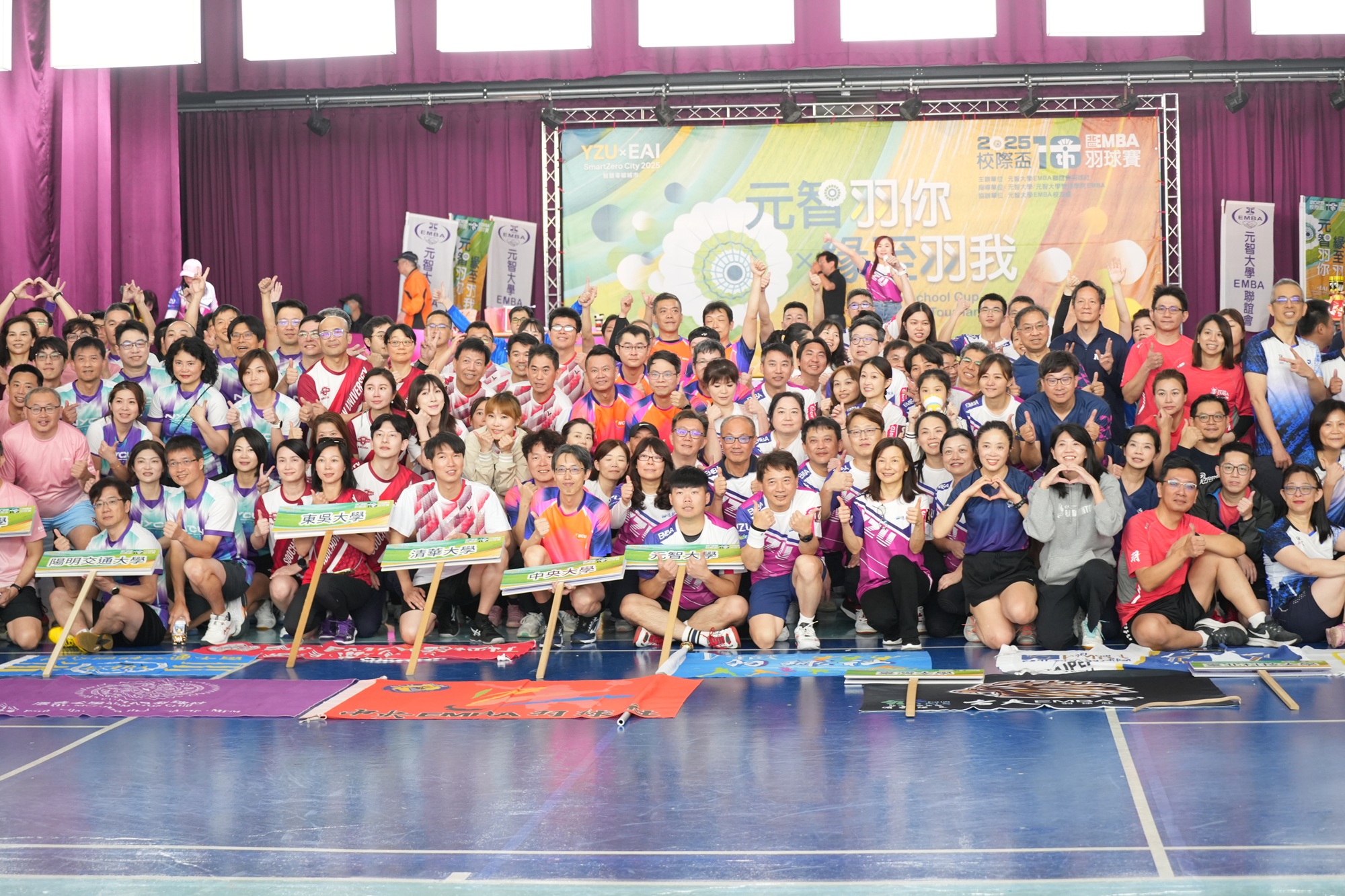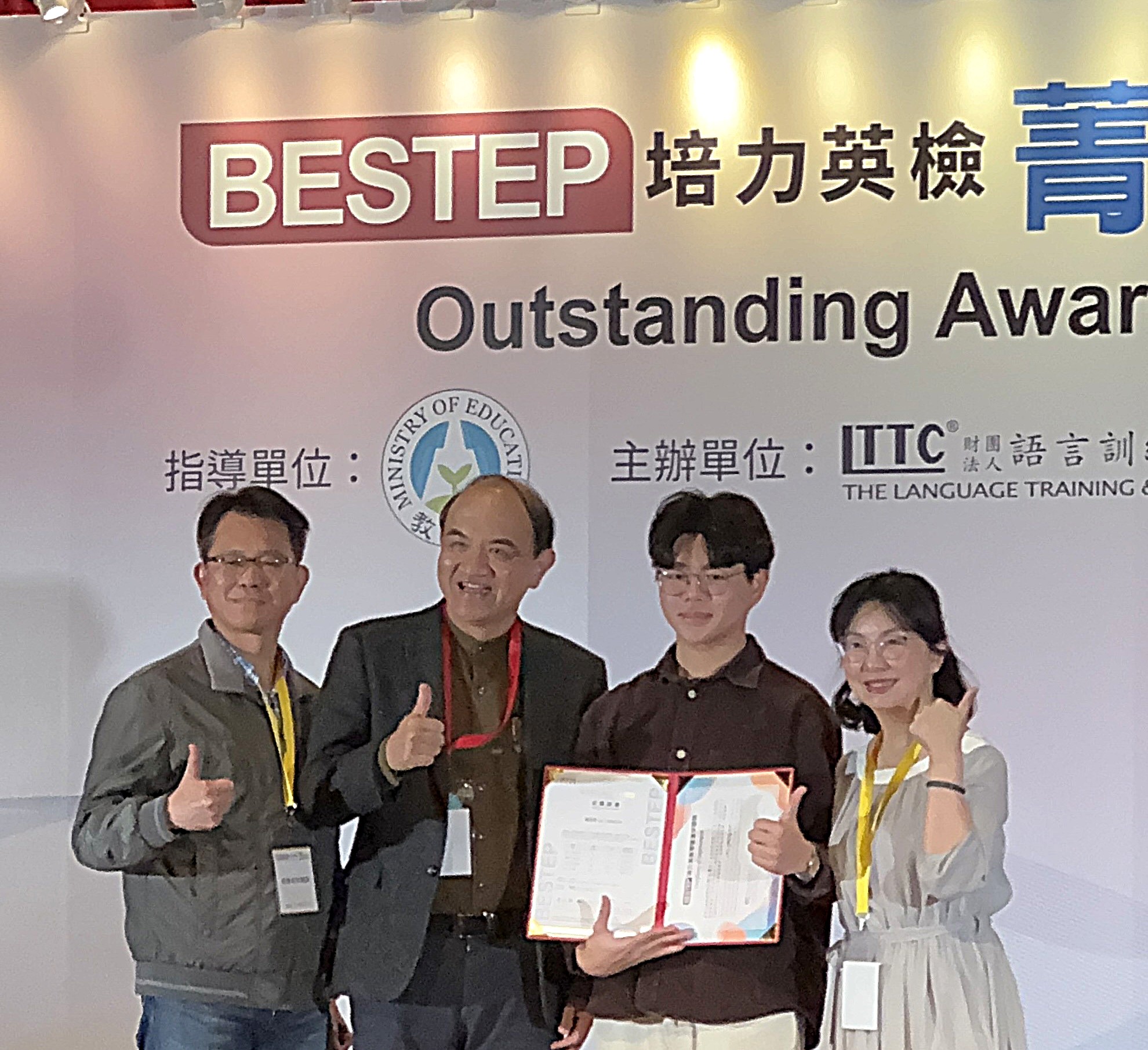Faculty and students from Yuan Ze University’s Department of Art and Design participated in the "Taoyuan Youth Design Playground – Multimedia Design Exhibition," organized by the Taoyuan City Government Youth Affairs Bureau.
They showcased nine interactive installation works that blended art and technology, demonstrating the innovative power of digital design. The exhibition was held from March 12 to April 14 at the 6th-floor exhibition hall of the Taoyuan Design Library, offering an immersive experience that combined art and technology.
The exhibition focused on interactive design and digital creation, featuring works that included dynamic mechanisms, artificial intelligence, light and shadow installations, and sound visualization technologies, breaking the traditional boundaries of visual art. Among the works, Luo Zhi-Lin’s "Symbiotic Gaze" used AI and real-time image processing technology to explore how the act of viewing is influenced by cultural and social norms. The audience could reconsider their self-image through a “digital mirror.” Peng Yun-Jia’s "Sonic Morphologies" used real-time speech generation technology to transform sound into dynamic images, allowing the audience to "see" the flow of sound, challenging traditional concepts of language and communication.
In addition to the applications of artificial intelligence and sound visualization, the exhibition also featured several stunning interactive installations, showcasing the endless possibilities of the intersection of art and technology. Shi Kui-Yu and Li You-En’s "Bubble Paradise" used glowing and rotating visual effects to simulate floating bubbles, creating a dreamy and dynamic artistic experience. Wang Xi-Sheng, inspired by NASA technology, created "Launch Pad", which used origami structures and mechanical operations to present a futuristic, bionic movement, making the audience feel as though they were part of a space exploration journey.
In "Inorganic Organics", Huang Yu-Sheng and Li You-Yun used motors to drive plastic sheets, making them move in ways that mimicked biological rhythms, cleverly blurring the line between machines and life, challenging traditional notions of "organic" and "inorganic." Liang Yong-Ti and Zeng Zi-Xun’s "Claw Grab" utilized sensors and tension mechanisms, allowing a mechanical claw to automatically extend and retract, simulating the instinctual reactions of living organisms and presenting a clever combination of mechanical and natural dynamics.
Huang Pei-Zhen and Jian Jie-Rong’s "Moon Gap" was inspired by childhood paper-folding games, allowing the structure to freely change between different geometric shapes, bringing visual surprises and transformations. Liang Hao-Xiang’s "Mechanical Flower Garland" used intricate mechanical structures to make the petals open and close dynamically, mimicking the rhythms of life in nature, as if the metal and machinery had life.
Additionally, Xu Ya-Han’s "Reading in Progress" cleverly combined artificial intelligence and human-computer interaction, allowing AI and the audience to participate in reading, expressing understanding through subtle hand movements, creating a whole new reading experience. These works not only demonstrated the students' deep exploration of technology and art but also allowed the audience to experience the innovative sparks created by the collision of design and digital technology.
Associate Professor Lin Chu-Qing, the students' mentor, stated that through interdisciplinary learning, the students combined interactive installations and digital art, showcasing the diverse development potential of future design. This exhibition not only provided an unprecedented sensory experience but also offered high school students interested in interactive design a unique opportunity to explore the fusion of design and technology up close.
 English
English  正體中文
正體中文 



